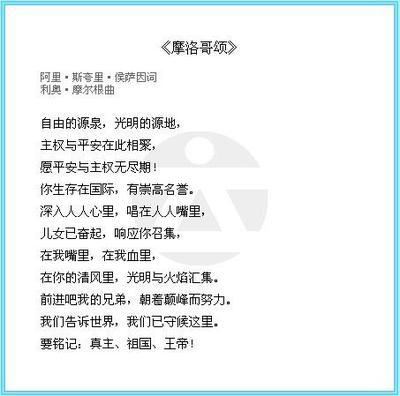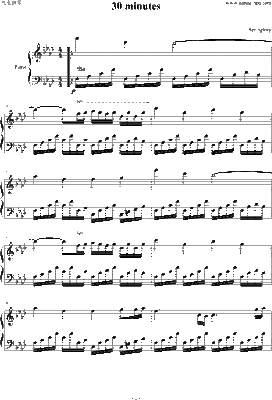(这里是部分内容节选...)
5.4 Rocks are slow life
5.4.岩石乃节奏缓慢的生命
One of the first to articulate the transcendent view that life directly shaped the physicality of this planet was the Russian geologistVladimir Vernadsky, writing in 1926. Vernadsky tallied up the billions of organisms on Earth and considered their collective impact upon the material resources of the planet. He called this grand system of resources the "biosphere," (althoughEduard Suesshad coined the term a few years earlier) and set out to measure it quantitatively in his book The Biosphere, a volume only recently translated into English.
一个前卫的观点:生命直接塑造了地球的肉身。第一批阐明这个观点的人中有一位是俄罗斯地质学家弗拉基米尔•沃尔纳德斯基(Vladimir Vernadsky),他在1926年出了一本书。沃尔纳德斯基将地球上亿万生命体加以总计,并思考它们对地球的物质资源造成的集体影响。他把这个宏大的资源系统称为“生物圈”(但是早几年爱德华•修斯(Eduard Suess)[1]就已经命名了这个术语),并在他的书里着手对生物圈进行了量化测量。书名为《生物圈》,最近才有英语译本[2]。
In articulating life as a chameleon on a rocky mirror, Vernadsky committed heresy on two counts. He enraged biologists by considering the biosphere of living creatures as a large chemical factory. Plants and animals were mere temporary chemical storage units for the massive flow of minerals around the world. "Living matter is a specific kind of rock...an ancient and, at the same time, an eternally young rock," Vernadsky wrote. Living creatures were delicate shells to hold these minerals. "The purpose of animals," he once said of their locomotion and movement, "is to assist the wind and waves to stir the brewing biosphere."
将生命比作石头镜子上的变色龙,沃尔纳德斯基的异类学说可谓两面得罪。他把生物居住的生物圈看做巨型的化工厂,生物学家对此甚为不满。植物和动物不过是临时化学载体,充当地球矿物流变轮回过程中歇脚的客栈。“生命物质是岩石的一个特类……既古老同时又恒久年轻的岩石,”沃尔纳德斯基写道。活体生物存储这些矿物,象精巧易碎的贝壳。“动物的目的,”一次谈到动物的迁移和运动的时候他这样说,“是协助风和海浪搅动酿作中的生物圈。”
At the same time, Vernadsky enraged geologists by considering rocks as if they were half-alive. Since the genesis of every rock was in life, their gradual interaction with living organisms meant that rocks were the part of life that moved the slowest. The mountains, the waters of the ocean, and the gases of the sky were very slow life. Naturally, geologists balked at this apparent mysticism.
与此同时,将岩石看做半具生命性的观点又令地质学家大为不满。沃尔纳德斯基说,由于每块石头都从生命中起源,它们与生命有机物之间渐进的互动说明岩石是生命形式里移动最慢的一部分。高山、海水以及空气,都是节奏非常缓慢的生命。地质学家们当然要羁縻这种明显的神秘主义[3]的说法。
The two heresies melded into a beautiful symmetry. Life as ever-renewing mineral, and minerals as slow life. They could only be opposite sides of a single coin. The two sides of this equation cannot be mathematically unraveled; they are one system: lizard-mirror, plant/insect, rock-life, and now in modern times, human/machine. The organism behaves as environment, the environment behaves as organism.
两条异端的罪状合并成一种美丽的对称。生命是不断重生的矿物质,矿物质是节奏缓慢的生命。它们只能属于同一枚硬币的正反两面。这个方程式的两端不能精确地解开;它们同属一个系统:蜥蜴/镜子、植物/昆虫、岩石/生命,以及当代的人类/机器系统。有机体运行犹如环境,而环境运行犹如有机体。
This has been a venerable idea at the edge of science for at least several hundred years. Many evolutionary biologists in the last century such as T. H. Huxley,Herbert Spencer, andDarwin, too, understood it intuitively -- that the physical environment shapes its creatures and the creatures shape their environment, and if considered in the long view, the environment is the organism and the organism is the environment.Alfred Lotka, an early theoretical biologist, wrote in 1925, "It is not so much the organism or the species that evolves, but the entire system, species plus environment. The two are inseparable." The entire system of evolving life and planet was coevolution, the dance of the chameleon on the mirror.
这个游走于正统科学边缘的观念起码有好几百年了,值得尊敬。19世纪许多持进化论的生物学家如T. H.• 赫胥黎(T.H.Huxley),赫伯特•斯宾塞(Herbert Spencer),当然还有达尔文,对此都有直观的理解——物质环境塑造了其中的生物,而生物也塑造了周边的环境,如果从长远看,环境就是生物有机体,而生物有机体就是环境。早期的理论生物学家阿尔弗雷德•洛卡(Alfred Lotka)[4]于1925年写道:“生物个体或物种的进化,其幅度并不大,物种加环境的整个系统的进化才是巨大的。两者是不可分的。”整个生命和星球的系统进化就是共同进化,是变色龙的镜上舞。
If life were to vanish from Earth, Vernadsky realized, not only would the planet sink back into the "chemical calm" of an equilibrium state, but the clay deposits, limestone caves, ores in mine, chalk cliffs, and the very structure of all that we consider the Earth's landscape would retreat. "Life is not an external and accidental development on the terrestrial surface. Rather, it is intimately related with the constitution of the Earth's crust," Vernadsky wrote in 1929. "Without life, the face of the Earth would become as motionless and inert as the face of the moon."
沃尔纳德斯基认为,假如生命从地球上消失,不但地球本身沉沦至一种“化学静歇”的平衡状态,而且粘土沉积物,石灰岩溶洞,矿物矿脉,白垩石峭壁以及我们视为地貌景观的一切种种也随之退隐。“生命并非发生在地表的一种外来、偶然的发展。相反,它与地壳的构造有着密切的关联,”沃尔纳德斯基1929年写道。“没有生命,地球的脸面就会失去表情,变得像月球般地木然。”
Three decades later, free-thinkerJames Lovelockarrived at the same conclusions based on his telescopic analysis of other planets. Lovelock observed, "In no way do organisms simply 'adapt' to a dead world determined by physics and chemistry alone. They live in a world that is the breath and bones of their ancestors and that they are now sustaining." Lovelock had more complete knowledge of early Earth than was available to Vernadsky, and a slightly better understanding of the global patterns of gases and material flows on Earth. All this led him to suggest in complete seriousness that "the air we breathe, the oceans, and the rocks are all either the direct products of living organisms or else have been greatly modified by their presence."
30年后,自由思想家詹姆斯•洛夫洛克根据其通过天文望远镜对其他行星进行的分析也得出同样的结论。“生物体绝非简单适应一个只有物理和化学反应主导的死世界。它们生存的世界由其先祖们的气息和骨骼构成,并由它们继续维系。”洛夫洛克有关早期地球的知识较之沃尔纳德斯基当时能得到的更为全面,对有关地球气体和物质流动的模式的理解也占一点点优势。据此他十分严肃地提出:“我们呼吸的空气,以及海洋和岩石,要么是生命有机体的直接产物,要么就是因为有机体的出现而被大为改良过了。
Such a remarkable conclusion was foreshadowed by the French natural philosopher,Jean Baptiste Lamarck, who in 1800 had even less information about planetary dynamics than Vernadsky did. As a biologist, Lamarck was equal toDarwin. He, notDarwin, was the true discoverer of evolution, but Lamarck is stuck with an undeserved reputation as a loser, in part because he relied a little too much on intuition rather than the modern notion of detailed facts. Lamarck made an intuitive guess about the biosphere and again was prescient. Since there wasn't a shred of scientific evidence to support Lamarck's claims at the time, his observations were not influential. He wrote in 1802, "Complex mineral substances of all kinds that constitute the external crust of the Earth occurring in the form of individual accumulations, ore bodies, parallel strata, etc., and forming lowlands, hills, valleys, and mountains, are exclusively products of the animals and plants that existed within these areas of the Earth's surface."
这个非凡论断风头却被法国自然哲学家让•巴蒂斯特•拉马克[5]盖过, 他在1800年能获得的行星动力学方面知识比沃尔纳德斯基要少,却已预言及此。作为生物学家,拉马克与达尔文旗鼓相当。他,而非达尔文,才是进化论真正的发现人。拉马克之所以没有获得应得的赞誉而沦落为失败者,部分原因是他太过依赖直觉而不是现代科学推崇的详细的例证。拉马克凭直觉猜想有这么个生物圈的概念,又被他言中。但因为没有半点科学根据来作支持,拉马克的言论不具影响力。1802年他写道:“以矿体、岩层等单体堆积形式出现的所有构成地壳的复杂矿物质,以及由此形成的低地,丘陵,峡谷和山脉,都是在地球表面生存过的的动植物的独一无二的产物。”
The bold claims of Lamarck, Vernadsky, and Lovelock seem ludicrous at first, but in the calculus of lateral causality make fine sense: that all we can see around us -- the snow-covered Himalayas, the deep oceans east and west, vistas of rolling hills, awesome painted desert canyons, game-filled valleys -- are all as much the product of life as the honeycomb.
拉马克、沃尔纳德斯基还有洛夫洛克等人大胆的主张开始时貌似荒谬,但经过侧面推算其因果关系颇为成立:我们周围目所能及的一切——白雪皑皑的喜马拉雅山,从东到西的幽深大洋,逶迤起伏的山丘,壮丽的荒漠峡谷,充满乐趣的溪谷——与蜂窝相差不多,都是生命的产物。
Lovelock kept gazing into the mirror and finding that it was nearly bottomless. As he examined the biosphere in succeeding years, he added more complex phenomena to the list of life-made. Some examples: plankton in the oceans release a gas (DMS) which oxidizes to produce submicroscopic aerosols of sulfate salts which form nuclei for the condensation of cloud droplets. Thus perhaps even clouds and rain may be biogenic. Summer thunderstorms may be life raining on itself. Some studies hinted that a majority of nuclei in snow crystals may be decayed vegetation, bacteria, or fungi spores; and so snow may be largely life-triggered. Only very little could escape life's imprint. "It may be that the core of our planet is unchanged as a result of life; but it would be unwise to assume it," Lovelock said.
洛夫洛克不停地窥探魔镜,发现里面几乎就是个无底深渊。其后多年对生物圈的验证里,他将更多的复杂现象列入了生命产物清单。例如:海洋浮游生物释放出一种气体(二甲基硫),经氧化后产生亚微观的硫酸盐气雾,是为云中水滴凝聚的核心。以此推论,甚至乎云层雨水也是由生物活动产生的。夏天的雷暴也许是生命自身幻化为雨。某些研究提示,雪晶的核多为腐朽的草木、细菌或真菌孢子;因此,降雪可能也大多是由生命触发的。能逃脱生命印记的只是极少数。“或许地核不因生命而改变;但作此假定也可能是不智的,”洛夫洛克如是说。
"Living matter is the most powerful geological force," Vernadsky claimed, "and it is growing with time." The more life, the greater its material force. Humans intensify life further. We harness fossil energy and breathe life into machines. Our entire manufactured infrastructure -- as an extension of our own bodies -- becomes part of a wider, global-scale life. As the carbon dioxide from our industry pours into the air and alters the global air mix, the realm of our artificial machines also becomes part of the planetary life.Jonathan Weinerwriting in The Next One Hundred Years then can rightly say, "The Industrial Revolution was an astonishing geological event." If rocks are slow life, then our machines are quicker slow life.
“活物质是最具威力的地质力量,”沃尔纳德斯基断言,“而且这力量与时俱进。”生命越多,它的物质力量就越大。人类将生命形式进一步强化。我们获取化石能源,我们将生命活性植入机器。我们整个的制造业的基础设施——好比我们身体的扩展——成为更为广泛、全球范围的大生命系统的一部分。我们的工业产生的二氧化碳进入大气,改变全球大气成分,我们的人工机械王国也成为地球生命的一部。乔纳森•韦纳(Jonathan Weiner)[6]当年写《下一个百年》时就能正确地说:“工业革命是惊心动魄的地质史上的大事。”如果说岩石是节奏缓慢的生命,那么我们的机器就是相对稍快的节奏缓慢的生命。
The Earth as mother was an old and comforting notion. But the Earth as mechanical device has been a harder idea to swallow. Vernadsky came very close to Lovelock's epiphany that the Earth's biosphere exhibits a regulation beyond chemical equilibrium. Vernadsky noted that "organisms exhibit a type of self-government" and that the biosphere seemed to be self-governed, but Vernadsky didn't press further because the crucial concept of self-government as a purely mechanical process had not yet been uncovered. How could a mere machine control itself?
将地球比作母亲由来已久且令人欣慰。但若将地球比作机械装置却生硬而令人难以消化。沃尔纳德斯基的看法与洛夫洛克的悟见很接近,即地球的生物圈展现的是一个超越化学平衡的规则。沃尔纳德斯基注意到“生物体表现出一种自治”,而生物圈似乎也是自治的,但他没有作进一步推论,因为当时纯粹机加工过程的自控这一重要理念尚未揭盅。机器怎么能自我控制呢?
We now know that self-control and self-governance are not mystical vital spirits found only in life because we have built machines that contain them. Rather, control and purpose are purely logical processes that can emerge in any sufficiently complex medium, including that of iron gears and levers, or even complex chemical pathways. If a thermostat or a steam engine can own self-governance, the idea of a planet evolving such graceful feedback circuits is not so alien.
我们现在知道自我控制和自我治理并非只能在生命形式中找到,我们了解这种神密而维系生命的灵力,因为我们造出了具备这种灵力的机械。其实,控制和意图是纯粹的逻辑处理程序,能在任何足够复杂的介质之中涌现,包括铁制齿轮和杆件,或者更为复杂的化学路径。如果恒温器和蒸汽机具有自治能力,那么一个星球上进化出如此优美的反馈回路也不是那么异类的想法了。
Lovelock brought an engineer's sensibilities to the analysis of Mother Earth. He was a tinkerer, inventor, patent holder, and had worked for the biggest engineering firm of all time, NASA. In 1972, Lovelock offered a hypothesis of where the planet's self-government lay. He wrote, "The entire range of living matter on Earth, from whales to viruses, from oaks to algae, could be regarded as constituting a single living entity, capable of manipulating the Earth's atmosphere to suit its overall needs and endowed with faculties and powers far beyond those of its constituent part." Lovelock called this view Gaia. Together with microbiologistLynn Margulis, the two published the view in 1972 so that it could be critiqued on scientific terms. Lovelock says, "The Gaia theory is a bit stronger than coevolution," at least as biologists use the word.
洛夫洛克将工程师的敏感带入对地球母亲的分析。他做过修补匠,发明家,专利持有人,还在史上最大的工程技术公司NASA工作过。1972年,洛夫洛克提出一个有关地球的自治体现在哪里的假设。他写道:“地球上全部序列的活物质,从巨鲸到病毒,从橡树到海藻,都可视作组成一个单一活实体,能够利用地球大气满足自己全部需要、并被赋予远超过其自身构成的能力和能量。”洛夫洛克把这观点称为盖亚[7]。并在1972年与微生物学家琳恩•马基莉斯(Lynn Margulis)[8]一起发表了这个观点,使之得以成为科学术语以供评说。洛夫洛克说:“盖亚理论与共同进化论相比稍显强势,”至少在生物学家采用这个词的时候。
A pair of coevolutionary creatures chasing each other in an escalating arms race can only seem to veer out of control. Likewise, a pair of cozy coevolutionary symbionts embracing each other can only seem to lead to stagnant solipsism. But Lovelock saw that if you had a vast network of coevolutionary impulses, such that no creatures could escape creating its own substrate and the substrate its own creatures, then the web of coevolution spread around until it closed a circuit of self-making and self-control. The "obligate cooperation" of Ehrlich's coevolution -- whether of mutual enemies or mutual partners -- cannot only raise an emergent cohesion out of the parts, but this cohesion can actively temper its own extremes and thereby seek its own survival. The solidarity produced by a planetary field of creatures mirrored in a coevolving environment and each other is what Lovelock means by Gaia.

一对共同进化的生物之间互相算计,其不断升级的军备竞赛看来似乎只能滑向失控的结局。同样地,一对温馨相处的共同进化的共生生物看来只能演变为停滞的唯我主义[9]。但洛夫洛克别有见地,他认为,假使有一张具有共同进化冲劲的大网,它网罗所有生物使其无可逃遁,生物创造自身存活所在的基质,而基质又创造存活其中的生物,这个共同进化的网络就会向周围扩展直到封闭成为一个自给自足、自我控制的轮回。在埃尔利希“专性合作”的共同进化模式里——无论相互敌对抑或相互合作——各方都不能独自提升出涌现性的内聚力,但这股内聚力会积极地调和它的各个极端面来寻求自身的生存。在共同进化的环境里通过魔镜效应,全球范围内生物策划出休戚与共,彼此就是洛夫洛克所指的盖亚。
Many biologists (including Paul Ehrlich) are unhappy with the idea of Gaia because Lovelock expanded the definition of life without asking their permission. He unilaterally enlarged life's scope to include a predominantly mechanical apparatus. In one easy word, a solid planet became "the largest manifestation of life" that we know. It is an odd beast: 99.9 percent rock, a lot of water, and a little air, wrapped up in the thinnest green film that would stretch around it.
由于洛夫洛克未获准许就扩大了生命的定义,许多生物学家(包括保罗•埃尔利希)都不喜欢盖亚理念。他单方面扩大生命的范围使之包括了一个占统治地位的机械装置。说白了,就是让我们知道固体的地球成了“生命最大的体现”。看这头怪兽:99.9%的岩石,大量的水,外加一点空气,再复以最最薄的一层势将包裹它的绿膜。
But if Earth is reduced to the size of a bacteria, and inspected under high-powered optics, would it seem stranger than a virus? Gaia hovers there, a blue sphere under the stark light, inhaling energy, regulating its internal states, fending off disturbances, complexifying, and ready to transform another planet if given a chance.
但是,假如将地球缩成细菌大小,放在高倍显微镜下观察,它能比病毒更奇怪吗?一个蓝色的星体在冷硬的光照下翩跹,那是盖亚之舞,吸收着能量,调整着姿态,抗击着风风雨雨,日趋繁复,准备好一有机会便去改造另一个星球。
While Lovelock backs off earlier assertions that Gaia is an organism, or acts as if it is one, he maintains that it really is a system that has living characteristics. It is a vivisystem. It is a system that is alive, whether or not it possesses all the attributes needed for an organism.
当洛夫洛克从其早期的关于盖亚是一个有机体或表现得像一个有机体的主张退缩的时候,他保留意见说盖亚确实是一个具有生命特色的系统。它是一个活系统。它是一个鲜活的系统,是与不是它都具备构成有机体的所有属性。
That Gaia is made up of many purely mechanical circuits shouldn't deter us from applying the label of life. After all, cells are mostly chemical cycles. Some ocean diatoms are mostly inert, crystallized calcium. Trees are mostly dead pulp. But they are still living organisms.
盖亚整合了许多纯机械回路于一身,但不应阻断我们给它贴上生命标签的念想。毕竟,细胞多为化学循环。海洋里某些硅藻类多为无生气的钙晶。树木多为死去的浆汁。但它们全都仍然是生命有机体。
Gaia is a bounded whole. As a living system, its inert, mechanistic parts are part of its life. Lovelock: "There is no clear distinction anywhere on the Earth's surface between living and nonliving matter. There is merely a hierarchy of intensity going from the material environment of the rocks and atmosphere to the living cells." Somewhere at the boundary of Gaia, either in the rarefied airs of the stratosphere or deep in the Earth's molten core, the effects of life fade. No one can say where that line is, if there is a line.
盖亚是一个有界线的整体。作为一个生命系统,它的无生气、机械的构成体也是它生命的一部。洛夫洛克说:“地球表面上任何地方都没有生命或非生命的明确的区分。只有从岩石和大气的物质环境到活细胞的不同生命强度的层级而已。”盖亚疆域的某处,或是稀薄的大气同温层或是地球深处炽热的核心,在那儿生命的影响力式微。即使真有一条界线,也没人说得清它到底在哪儿。
5.5. 不讲交情或无需远见的合作
The trouble with Gaia, as far as most skeptics are concerned, is that it makes a dead planet into a "smart" machine. We already are stymied in trying to design an artificial learning machine from inert computers, so the prospect of artificial learning evolving unbidden at a planetary scale seems ludicrous.
对于多数怀疑论者说来,盖亚的问题在于将一个死星球改造成为一部“精明的”机器。由于我们试图将了无生气的计算机整合成仿真学习机器的尝试已遭狙击,因此,在一个行星尺度内引入仿真学习进化这么一位不速之客,其前景似乎挺荒谬。
But learning is overrated as something difficult to evolve. This may have to do with our chauvinistic attachment to learning as an exclusive mark of our species. There is a strong sense, which I hope to demonstrate in this book, in which evolution itself is a type of learning. Therefore learning occurs wherever evolution is, even if artificially.
但因为难以进化的物事的存在,学习的作用难免被高估。这可能与我们视学习能力为人类独有的标志这种沙文主义相当然的心理有关。我希望在这本书里表达并论证一种强烈的见地,即进化本身就是一种学习。因此,凡有进化的地方就有学习,哪怕是人工选择的进化也罢。
The dethronement of learning is one of the most exciting intellectual frontiers we are now crossing. In a virtual cyclotron, learning is being smashed into its primitives. Scientists are cataloguing the elemental components for adaptation, induction, intelligence, evolution, and coevolution into a periodic table of life. The particles for learning lie everywhere in all inert media, waiting to be assembled (and often self-assembled) into something that surges and quivers.
将学习行为拉下神坛,意味着我们来到了最激动人心的理智边缘的十字路口。在一个虚拟的回旋加速器里,学习正被撞裂成为其原粒子。科学家们正在将适应、归纳、思维推理、进化、共同进化等元素成分编目造册,编成一个生命的元素周期表。学习的各种构成粒子藏身于所有的没有生气的介质当中,等待被组装(并往往自行组装)成为奔涌灵动的事物。
Coevolution is a variety of learning.Stewart Brandwrote in CoEvolution Quarterly: "Ecology is a whole system, alright, but coevolution is a whole system in time. The health of it is forward-systemic self-education which feeds on constant imperfection. Ecology maintains. Coevolution learns."
共同进化就是多种形式的学习。斯图尔特•布兰德在《共同进化季刊》中写道:“生态关系是一个完整的系统,不错,但共同进化是一个实时的完整系统。它的健康取决于推进系统的自我教育,从持续的瑕疵中汲取营养。生态关系只是安于现状。共同进化则是不断学习。”
......
The Prisoner's Dilemma, invented in 1950 byMerrill Floodat RAND, is a game for two separately held prisoners who must independently decide whether to deny or confess to a crime. If both confess, each will be fined. If neither confesses, both go free. But if only one should confess, he is rewarded while the other is fined. Cooperation pays, but so does betrayal, if played right. What would you do?
《囚徒的困境》1950年由兰德公司的梅里尔•弗勒德(Merrill Flood)[6]创造,是两个分别关押的囚犯必须独立决定认罪或否定认罪的游戏。如果两人都认罪,那么两人都会获罪。两人都否认的话,两人都无罪释放。但假如只有一人认罪,那么他就会受奖,而另一个获罪[7]。合作有回报,但如果玩得好,背叛也有回报。该怎么办呢?
Played only once, betrayal of the other is the soundest choice. But when two "prisoners" played the game over and over, learning from each other-a game known as the Iterated Prisoner Dilemma-the dynamics of the game shifted. The other player could not be dismissed; he demanded to be attended to, either as obligate enemy or obligate colleague. This tight mutual destiny closely paralleled the coevolutionary relationship of political enemies, business competitors, or biological symbionts. As study of this simple game progressed, the larger question became, What were the strategies of play for the Iterated Prisoner's Dilemma that resulted in the highest scores over the long term? And what strategies succeeded when played against many varieties of players, from the ruthless to the kind?
如果只玩一次,背叛对手是最合理的选择。但当两个“囚徒”一次又一次地玩,从中相互学习——《迭代版[8]囚徒的困境》——游戏的重心就转移了。你不能无视对手玩家的需求;要么作为敌人要么作为同伙,他需要得到重视。[9]这种紧密相连的共同命运与政敌之间、生意对手之间或者生态共生共栖体之间的共同进化关系比肩并行。随着对这简单游戏的研究的进展,更大的问题出现了,想要长久取得高分,《迭代版囚徒的困境》的战略是什么?还有,和各种类型的对手对垒时,继之以什么样的策略,从无情到友善,选择哪一种呢?
In 1980,Robert Axelrod, a political science professor at University of Michigan, ran a tournament pitting 14 submitted strategies of Prisoner's Dilemma against each other in a round robin to see which one would triumph. The winner was a very simple strategy crafted by psychologistAnatol Rapoportcalled Tit-For-Tat. The Tit-For-Tat strategy prescribed reciprocating cooperation for cooperation, and defection for defection, and tended to engender periods of cooperation. Axelrod had discovered that "the shadow of the future," cast by playing a game repeatedly rather than once, encouraged cooperation, because it made sense for a player to cooperate now in order to ensure cooperation from others later. This glimpse of cooperation set Axelrod on this quest: "Under what conditions will cooperation emerge in a world of egoists without central authority?"
1980年,密歇根大学政治学教授罗伯特•阿克塞尔罗德(Robert Axelrod)[10]进行了一次锦标赛,采用了14条征集来的相互针对的《囚徒的困境》的对策,以循环赛的形式看哪个对策最后胜出。最后获胜的是一个最简单的对策,叫做“一报还一报(Tit-For-Tat)”由心理学家阿纳托•拉帕波特(Anatol Rapoport)[11]制作。“一报还一报”是往复型策略,规定以合作(次回合)回报合作(前回合),以背叛(次回合)回报背叛(前回合),并往往产生一轮轮合作的周期。阿克塞尔罗德发现,重复游戏比一次性游戏对“未来的影响”要大,它鼓励合作,因为对玩家说来,以此时的合作作为以后得到他人合作的保障挺有道理。合作的闪现使阿克塞尔罗德陷入思索:“在没有中央集权的前提下,需要什么条件才能在自我主义的世界里让合作行为自然产生呢?”
For centuries, the orthodox political reasoning originally articulated byThomas Hobbesin 1651 was dogma: that cooperation could only develop with the help of a benign central authority. Without top-down government, Hobbes claimed, there would be only collective selfishness. A strong hand had to bring forth political altruism, whatever the tone of economics. But the democracies of the West, beginning with the American and French Revolutions, suggested that societies with good communications could develop cooperative structures without heavy central control. Cooperation can emerge out of self-interest. In our postindustrial economy, spontaneous cooperation is a regular occurrence. Widespread industry-initiated standards (both of quality and protocols such as 110 volts or ASCII) and the rise of the Internet, the largest working anarchy in the world, have only intensified interest in the conditions necessary for hatching coevolutionary cooperation.
几个世纪以来,正统的政治性推论都将1651年托马斯•霍布斯(Thomas Hobbes)[12]的精辟论述奉为圭臬:即合作只能在良性的中央集权下产生。霍布斯断言,没有自上而下的管制,就只会有群体自私。不管经济体制如何,必须有强权推行政治利他主义。然而,由美国独立和法国革命肇始的西方民主政治认为,民意通达的社会可以在没有中央集权重压的情况下发展合作机制。从个人利益出发也能达成合作。在我们后工业化的经济里,自发的合作是常有的事。发端于工业领域的产品标准化的普及(既有关质量也有协议,如限压110伏特或美国信息交换标准码ASCII),以及世界最大无政府运转的因特网的兴起,强化的只是利益(个人的和群体的),这种利益包含在孕育共同进化的合作的必要条件之中。
This cooperation is not a new age spiritualism. Rather it is what Axelrod calls "cooperation without friendship or foresight"-cold principles of nature that work at many levels to birth a self-organizing structure. Sort of cooperation whether you want it or not.
这种合作不是新时代的唯心论。而是如阿克塞尔罗德所说,是“不讲交情无需远见的合作”——大自然的冷规则,适用在多种水平层次上缔造自我组织结构。不管你想不想要,多少都得合作些。
Games such as Prisoner's Dilemma can be played by any kind of adaptive agent-not just humans. Bacteria, armadillos, or computer transistors can make choices according to various reward schemes, weighing immediate sure gain over future greater but riskier gain. Played over time with the same partners, the results are both a game and a type of coevolution.
《囚徒的困境》这类游戏,不单只人类,任何自适应个体都可以玩。细菌,犰狳,或是计算机半导体都可以根据各种回报方案,在唾手可得的确定收获与远期更大的风险和收获之间作权衡。长时间面对同样的竞争伙伴,其结果既是游戏成绩,又是某种类型的共同进化。
Every complex adaptive organization faces a fundamental tradeoff. A creature must balance perfecting a skill or trait (building up legs to run faster) against experimenting with new traits (wings). It can never do all things at once. This daily dilemma is labeled the tradeoff between exploration and exploitation. Axelrod makes an analogy with a hospital: "On average you can expect a new medical drug to have a lower payoff than exploiting an established medication to its limits. But if you gave every patient the current best drug, you'd never get proven new drugs. From an individual's point of view you should never do the exploration. But from the society of individuals' point of view, you ought to try some experiments." How much to explore (gain for the future) versus how much to exploit (sure bet now) is the game a hospital has to play. Living organisms have a similar tradeoff in deciding how much mutation and innovation is needed to keep up with a changing environment. When they play the tradeoff against a sea of other creatures making similar tradeoffs, it becomes a coevolutionary game.
每一个复杂的自适应组织都面临着基本的权衡。生物必须在完善现有技能、特质(练腿力以便跑得更快)与尝试新特质(练翅膀)之间作取舍。它不能一次做完所有的事。这种日常的进退两难便归于在冒险和获益之间作权衡。阿克塞尔罗德用医院作一个类比:“一般情况下你可以想见试用某种新药比尽可能发掘已有成药的疗效回报来得低。但假如你给所有病人的都是目前最好的成药,你就永远无法验证新药的疗效。从每个病人个人角度来讲最好不被用于冒险(试用新药)。然而从社会集合体的角度出发,搞搞实验是必要的。”冒险尝新的占比(未来收益)与发掘已有成药的疗效的占比(目前稳赢的筹码)应该是多少,是医院不得不作的博弈。生命有机体为了跟上环境的变化,在决定其所需的变异和创新应该是多少的时候,也会作出类似的权衡。当它们以其自身权衡对抗海量的其他同样权衡的生物时,就玩开了一场共同进化的博弈游戏。
Axelrod's 14-player Prisoner's Dilemma round robin tournament was played on a computer. In 1987, Axelrod extended the computerization of the game by setting up a system in which small populations of programs played randomly generated Prisoner's Dilemma strategies. Each random strategy would be scored after a round of playing against all the other strategies running; the ones with the highest scores got copied the most to the next generation, so that the most successful strategies propagated. Because many strategies could succeed only by "preying" on other strategies, they would thrive only as long as their prey survived. This leads to the oscillating dynamics found everywhere in the wilds of nature; how fox and hare populations rise and fall over the years in coevolutionary circularity. When the hares increase the foxes boom; when the foxes boom, the hares die off. But when there are no hares, the foxes starve. When there are less foxes, the hares increase. And when the hares increase the foxes do too, and so on.
阿克塞尔罗德的14种对策《囚徒的困境》循环锦标赛是在电脑上进行的。1987年,阿克塞尔罗德通过设定一套系统增强了游戏的电脑化。在这个系统里,随机运行的小批量的程序产生《囚徒的困境》的对策。每个随机的对策在和所有其他运行中的对策对阵一圈之后被打分,得分最高的对策在下一代的复制率最高,于是最成功的对策便得以繁衍。许多对策胜只胜在“掠食”其他对策,所以,只要它们的掠食对象继续存在,它们就活得滋润。这就导出了自然界荒野中俯拾皆是的生物数量周期波动机理,说明了狐狸和兔子的数量在年复一年的共同进化的循环中是如何增减的。兔子数量增,狐狸繁殖多;狐狸繁殖多,兔子死翘翘。但是没有了兔子,狐狸就得饿死。狐狸数量少了,兔子数量就多了。兔子多了,狐狸也就多了,以此类推。
In 1990,Kristian Lindgren, working at the Neils Bohr Institute in Copenhagen, expanded these coevolutionary experiments by increasing the population of players to 1,000, introducing random noise into the games, and letting this artificial coevolution run for up to 30,000 generations. Lindgren found that masses of dumb agents playing Prisoner's Dilemma not only reenacted the ecological oscillations of fox and hare, but the populations also created many other natural phenomenon such as parasitism, spontaneously emerging symbiosis, and long-term stable coexistence between species, as if they were an ecology. Lindgren's work excited some biologists because his very long runs displayed long periods when the mix of different "species" of strategy was very stable. These historical epochs were interrupted by very sudden, short-lived episodes of instability, when old species went extinct and new ones took root. Quickly a new stable arrangement of new species of strategies arose and persisted for many thousands of generations. This motif matches the general pattern of evolution found in earthly fossils, a pattern known in the evolutionary trade as punctuated equilibrium, or "punk eek" for short.
1990年,在哥本哈根尼尔斯波尔研究院工作的克里斯蒂安•林德格雷(Kristian Lindgren)[13]将这个共同进化实验的参与个体数扩展到一千,同时将随机干扰引入游戏,使这个人造的共同进化博弈游戏可以玩到繁衍三万世代之后。林德格雷发现,参与《囚徒的困境》游戏的大多数愚暗个体不但重演了狐狸和兔子数量的周期波动,也创造其他许多自然现象如寄生,自发涌现的共生共栖,以及物种之间长期稳定的共存等,如同一整套生态系统。林德格雷的工作激发了一些生物学家,因为他的漫长回合博弈游戏的最终结果显示,这些持不同对策的“物种”大杂烩维持了长期的稳定。而这些开元盛世被突发、短命的不稳定插曲打断,于是旧的物种灭绝,新的物种扎根。持新对策的物种间迅速达成新的稳定,又持续发展数千代。这个基调与从早期化石里发现的进化的常规模式契合,该模式在进化论业界里叫做间断平衡(注,作为对达尔文渐变论的修正,间断平衡论现在被进化学家广为采纳,认为新种只能通过线系分支产生,只能以跳跃的方式快速形成;新种一旦形成就处于保守或进化停滞状态,直到下一次物种形成事件发生之前,表型上都不会有明显变化;进化是跳跃与停滞相间,不存在匀速、平滑、渐变的进化。)或简称为"蹦移punk eek"[14]。
One marvelous result from these experiments bears consideration by anyone hoping to manage coevolutionary forces. It's another law of the gods. It turns out that no matter what clever strategy you engineer or evolve in a world laced by chameleon-on-a-mirror loops, if it is applied as a perfectly pure rule that you obey absolutely, it will not be evolutionary resilient to competing strategies. That is, a competing strategy will figure out how to exploit your rule in the long run. A little touch of randomness (mistakes, imperfections), on the other hand, actually creates long-term stability in coevolutionary worlds by allowing some strategies to prevail for relative eons by not being so easily aped. Without noise-wholly unexpected and out-of-character choices-the opportunity for escalating evolution is lost because there are not enough periods of stability to keep the system going. Error keeps the glue of coevolutionary relationships from binding too tightly into runaway death spirals, and therefore error keeps a coevolutionary system afloat and moving forward. Honor thy error.
这些实验得出了一个了不起的结果,令所有希望驾驭共同进化伟力的人都为之瞩目。这是众神的另一条律法。其结果是,在饰以“镜子上的变色龙”式的叠套花环的世界里,无论你采取或演变出怎样高妙的策略,只要你把它作为应当绝对服从的完全纯正的教条来应用,它就不是进化论所谓的有弹性的竞争策略。也就是说,竞争策略能够为你找出适合你的行事准则,以利于长远开发其利益。另一方面,对随机性因素(出错、缺陷)的浅尝辄止,即允许某些不能轻易模仿的策略相对长久地盛行,确实能缔造出共同进化世界里的长远稳定。没有了干扰——即全然预料不到及与角色不符的选择——就没有足够多的稳定/不稳定更迭周期来维持系统的发展,逐步升级的进化就因此失去了机会。错误能使共同进化关系不致因为胶着太紧而陷入自沉的涡旋,进而保持共同进化系统顺流前行。善待你的错误。
Playing coevolutionary games in computers has provided otherlessons. One of the few notions from game theory to penetrate thepopular culture was the distinction of zero-sum and nonzero-sum games.Chess, elections, races, and poker are zero-sum games: the winner'searnings are deducted from the loser's assets. Natural wilderness, theeconomy, a mind, and networks on the other hand, are nonzero-sum games.Wolverines don't have to lose just because bears live. The highlyconnected loops of coevolutionary conflict mean the whole can reward(or at times cripple) all members. Axelrod told me, "One of theearliest and most important insights from game theory was thatnonzero-sum games had very different strategic implications thanzero-sum games. In zero-sum games whatever hurts the other guy is goodfor you. In nonzero-sum games you can both do well, or both do poorly.I think people often take a zero-sum view of the world when theyshouldn't. They often say, 'Well I'm doing better than the other guy,therefore I must be doing well.' In a nonzero-sum you could be doingbetter than the other guy and both be doing terribly."
在电脑上玩共同进化游戏还提供了另外的教益。少数几个能渗入通俗文化的博弈论理念中有一条,是区别零和与非零和游戏。国际象棋,选举,竞速和扑克是零和游戏:赢家的收益取自输家减少的资产。自然界的荒野,经济,思维意识,网络则属于非零和游戏:熊的存在并不意味狼獾会失败。共同进化争斗的层层链环意味着整体收益可以惠及(有时殃及)所有成员。阿克塞尔罗德告诉我,“来自博弈论最早、最重要的洞见之一是,非零和游戏的战略内涵与零和游戏的战略内涵截然不同。零和游戏中对他人的任何伤害都对你有好处。在非零和游戏中,你可能共荣,也可能同衰。我认为,人们常用零和游戏的观点看世界,其实他们本不该这样。他们常说:“我比别人做得好,所以我就该发达。”而在非零和游戏里,尽管你比别人做得好,你也可能和他一样潦倒。”
Axelrod noticed that the champion Tit-For-Tat strategy alwayswon without exploiting an opponent's strategy-it merely mirrored theother's actions. Tit-For-Tat could not beat anyone's strategy one onone, but in a nonzero-sum game it would still win a tournament becauseit had the highest cumulative score when played against many kinds ofrules. As Axelrod pointed out to William Poundstone,author of Prisoner's Dilemma, "That's a very bizarre idea. You can'twin a chess tournament by never beating anybody." But withcoevolution-change changing in response to itself-you can win withoutbeating others. Hard-nosed CEOs in the business world now recognizethat in the era of networks and alliances, companies can make billionswithout beating others. Win-win, the cliché is called.
阿克塞尔罗德注意到,作为赢家,“一报还一报”策略从不琢磨利用对手的策略——它只是将对手的行为还诸彼身。“一报还一报”从不和他人的策略一对一硬拼,但在非零和游戏中它还是能够夺得锦标,而它之所以能够夺得锦标是因为和多种不同的策略、方针较量后,其累积得分最高,。正如阿克塞尔罗德向《囚徒的困境》作者威廉•庞德斯通(William Poundstone)指出的:“立意太奇怪了。下棋时若不将对手打垮,你就拿不到锦标。”但是在共同进化中——变化是响应自身而变化——不用打击他人就能赢。企业界冥顽不灵的首席执行官们现在也承认,在网络和结盟的时代,公司犯不着打击他人就可以大把地赚钱。这个就是所谓的双赢。
Win-win is the story of life in coevolution.
双赢是共同进化模式下生命演绎的故事。
......
"Equilibrium is not only dead, it is death," Burgess emphasizes. "To enrich a system you need variance in time and space. But too much change will kill you too. You go from an ecocline to ecotone."
“均衡态不仅意味着死亡,它本身就是死状态”,博格斯强调。“系统要变得丰富,就需要时间和空间上的不同步变化。但太多的变化也不行。你会一下从生态渐变群[3]到了生态交错群[4]”
 爱华网
爱华网


